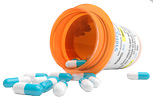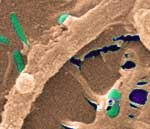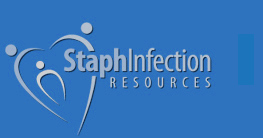Antibiotics Not Working? What can you do?

Antibiotics are often unable to stop a Staph or MRSA infection.
If you’ve been wondering why your antibiotics have stopped working for your MRSA or Staph infection, then you may be asking the following questions:
Common questions:
Below you’ll find answers to all these questions. You’ll also learn how to get the most out of using antibiotics and why these drugs often fail. And you’ll learn about powerful alternatives to antibiotics, including powerful herbal blends.
How to make your antibiotics work better
If you get infected with Staph or MRSA, your doctor will probably prescribe antibiotics for you. For many people, these treatments fail to work, especially against MRSA. For others, the therapy may work for a while but the infection comes back again later. Below are the main reasons why these antibacterial therapies stop working, why they often fail to work and what you can do to make them work better.
- Get the right antibiotic. The “standard protocol” followed by most doctors is to prescribe a general or broad-spectrum antibiotic for an infection and “see if it works”. If it doesn’t work, doctors often resort to a trial and error process in the hope of eventually finding an effective drug. General antibiotics are ineffective against MRSA and taking ineffective ones are dangerous and can be a big waste of of your time, health and money. Getting a MRSA test can help your doctor pick an antibiotic more likely to help you. However, the best option is to get an antibiotic susceptibility test which can provide the best antibiotic that actually works against your specific infection.
- Beware of over-prescribing. You can reduce the problem of resistance by taking antibiotics only when you absolutely need them. These medications have no affect on colds, flu or any other viral infection. Some doctors prescribe antibiotics “like candy”, so avoid asking for them when you get a cold or flu. Talk to your doctor to make sure they are aware of the problem and that they take steps to use these drugs sparingly and prudently. That means not prescribing these drugs for colds, flu or ear infections unless a bacterial infection is strongly suspected.
- Follow the directions. Be sure to take the antibiotic for the full prescribed course or duration. If you stop taking the medication early, it can increase the problem of resistance because the bacteria that are still alive are the most resistant. It’s important to take the fully prescribed course even if you feel better, unless directed to stop early by your doctor.
- Know the risks. Sometimes an antibiotic may need to be stopped because of bad side effects. Always keep your doctor in the loop with how you feel and how you react because side effects are very common with these drugs. Be sure they talk to you about the possible side effects. Some of these prescription medications have potentially severe and debilitating effects.
- Be aware of interactions and contraindications. Some foods, supplements and medications can interact or make antibiotics less effective. Ask your doctor to review anything that doesn’t mix well with your new prescription. As a general precaution, it’s best to take any supplements, probiotics or natural remedies at least 2 hours apart from antibiotics.
- Know their limitations. Keep in mind that antibiotics at their best can only provide short term relief. Stubborn infections like MRSA have a habit or returning again after you stop taking your prescription. This is because they have different ways they can hide within your body and evade antibiotics. Within weeks, months or even years, MRSA and Staph infections frequently come back unless you take a different approach.


Biofilms render many drug therapies ineffective.
How bacteria repel antibiotics
Staph and MRSA bacteria can form protective colonies or “homes” inside your body called biofilms. Because these biofilms are made of thick walls, it makes them 1000 times more resistant to antibiotics!
Biofilms allow bacteria to hide in your body for long periods of time and cause future infections. These bacteria can also mutate and hide within cells of your body. Implementing strategies like biofilm penetrating natural therapies and supporting your natural immunity help flush out these infections.
The “Achilles Heel” of antibiotics
The Achilles Heel of antibiotics is that the more they are used, the less effective they become. This problem is called antibiotic resistance. Bacteria change and adapt so quickly that they eventually become immune to every new antibiotic that’s discovered. So the more these antibacterials are prescribed, the less effective they become. And the more they are overused for livestock, the more opportunity bacteria have to become resistant. Bottom line: the more bacteria are exposed to these powerful medicines, the more resistant they become.
While resistance is the biggest problem, there are other important factors that make antibiotics less effective. Luckily, most of these problems can be reduced or even reversed with the right methods.
How antibiotic resistance got started
Before antibiotics, mainstream medicine had no options for treating internal bacterial infections. Doctors gave basic wound care, applied topical antiseptics to reduce infection, and they hoped their patient’s would eventually fight off the infection and recover on their own. Without these medicines and having limited knowledge of alternative therapies, internal infections often became deadly.
When antibiotics were first discovered in the 1930s and 40’s, they truly were a miracle cure, quickly stopping otherwise deadly infections. These powerful antimicrobials soon became the standard treatment method for bacterial infections. These therapies worked so well and became so popular that they began to get overused and even abused. To this day, doctors routinely prescribe antibiotics for ailments that they cannot treat, such as a cold, flu and other viral or fungal infections. And, they are often prescribed “just in case”, even if there is no sign of a bacterial infection.
Amazingly, the biggest use of antibiotics is outside of healthcare. The livestock industry is by far the biggest user of these important therapeutic drugs accounting for 80% of all antibiotic sales in the US. Feeding antibiotics to livestock allows factory farms to keep animals in overcrowded and disease-ridden conditions without getting sick. This means farms can raise more animals in smaller areas for less money. They also make animals grow fatter and larger, further increase profits.
The benefits of alternative therapies
While antibiotics can be powerful and effective against Staph and MRSA, they have some big downsides and limitations. And pharmaceutical companies are unable to come up with new drugs fast enough to keep up with demand and growing resistance.
As such, it is very important to educate yourself about the many alternative remedies available. Certain medicinal essential oils and herbs and Manuka honey have been shown effective in breaking down biofilm structures and killing MRSA, Staph and other bacteria. Alternatives can generally be used alone or together with your antibiotics. And, they have few if any side effects.
If you choose to use antibiotics, use them knowledgeably, only when absolutely necessary and after confirming that it works against your infection. You can also work with a integrative or naturopathic doctor and try an alternative remedy first, especially if you’re infection is mild to moderate.

- What are the most common MRSA antibiotics and what are their side effects?
- What are the best antibiotics for Staph infection?
- What are the pros and cons of antibiotics versus alternative remedies?




